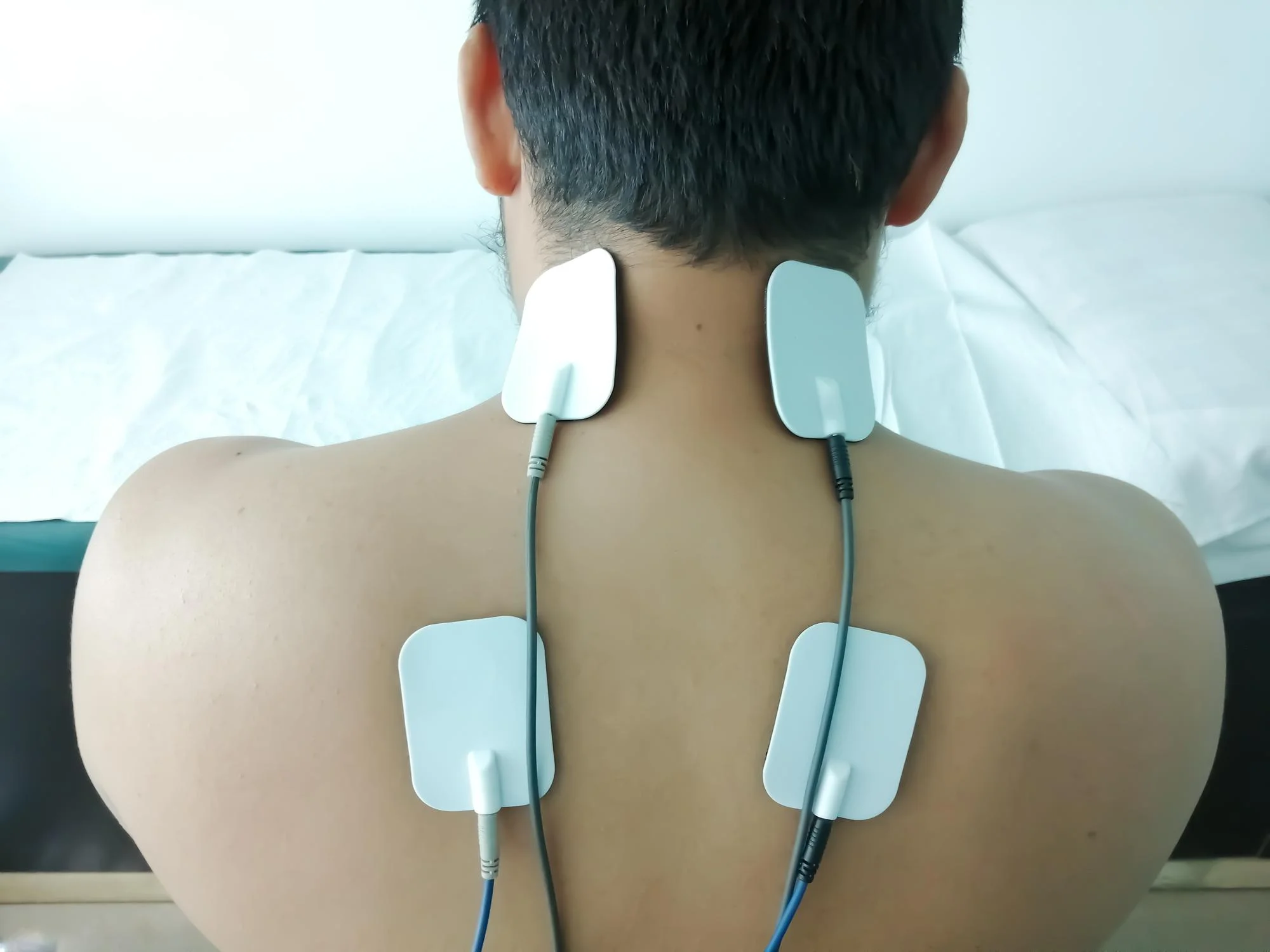Keywords
1. Electroacupuncture Calcific Tendonitis Treatment
2. Supraspinatus Tendonitis Pain Relief
3. Electrotherapy for Shoulder Pain
4. Conservative Treatment for Calcific Tendonitis
5. Shoulder Range of Motion Improvement Techniques
A recent study published in the Journal of Clinical Orthopaedics and Trauma has shed light on the potential benefits of electroacupuncture for the treatment of supraspinatus calcific tendonitis. The research conducted by Papadopoulos et al. (2019) explored the efficacy of this electrotherapy method when used in conjunction with medications, compared to a control group receiving only medications. This study represents a significant advancement in conservative treatment options for patients suffering from this painful condition.
Calcific tendonitis is a chronic condition characterized by the accumulation of calcium deposits within the tendons of the rotator cuff – predominantly affecting the supraspinatus tendon (Uhthoff & Loehr, 1997). Traditional conservative treatments include rest, anti-inflammatory medications, and various physiotherapy interventions (Bosworth, 1941). In some refractory cases, more invasive procedures such as extracorporeal shock-wave therapy or surgical removal are considered (Louwerens et al., 2014).
The efficacy of electrotherapy modalities, including electroacupuncture, has been a subject of interest within the field of pain management and orthopaedic rehabilitation (Watson, 2002). The study by Papadopoulos et al. brought forward a randomized clinical trial aiming to assess the potential benefits of electroacupuncture added to conventional treatment regimens for calcific tendonitis.
Methodology
The study involved 40 patients with confirmed calcific tendonitis of the supraspinatus tendon, randomly assigned to two groups. One group received a combination of medications typically used in the conservative treatment of calcific tendonitis and electroacupuncture. In contrast, the control group received only medications. Outcome measures included pain intensity on the visual analog scale (VAS), range of motion (ROM) of the shoulder assessed with a goniometer, quality of life, and functional status measured using the Instrumental Activities of Daily Living Scale (IADLS) and the Beck Depression Inventory (BDI). Radiological evaluation was also performed to monitor changes in calcific deposit size.
Results
The intervention group displayed more significant improvement in pain intensity, with an average reduction of 2.8 points on the VAS, and an increase in ROM, with forward flexion and abduction improvements of +30 and +29 degrees, respectively. Furthermore, total or near-total absorption of calcific deposits was seen radiologically in almost double the number of patients in the intervention group compared to the control. Notably, there was no significant difference in the quality of life and depression metrics between the two groups. These results indicate a profound impact of electroacupuncture on both symptomatic relief and the underlying pathology of the disease.
Follow-ups conducted 18-24 months post-treatment revealed a lower recurrence rate in the electroacupuncture group, solidifying the argument for its lasting therapeutic effects. The DOI for the article is 10.1016/j.jcot.2019.02.008.
Implications for Clinical Practice
This study’s outcomes suggest that electroacupuncture could be an effective addition to the conservative management of supraspinatus calcific tendonitis (Papadopoulos et al., 2019). Previous research has indicated that electrotherapy can modulate pain and tissue healing (Watson, 2000), and this trial’s results align with these notions.
In addition to the primary findings, the lack of significant improvement in the quality of life and depressive symptoms should prompt clinicians to consider a multifaceted treatment approach. Comprehensive care models, possibly integrating psychological or supportive therapies, could augment the benefits derived from physical interventions (Johansson et al., 2011).
References
1. Bosworth B. (1941). Calcium deposits in the shoulder and subacromial bursitis; a survey of 12122 shoulders. J. Am. Med. Assoc., 116, 2477–2482.
2. Uhthoff H.K., Loehr J.W. (1997). Calcific tendinopathy of the rotator cuff: pathogenesis, diagnosis, and management. J. Am. Acad. Orthop. Surg., 5(4), 183–191. PMID: 10797220
3. Watson T. (2002). Current concepts in electrotherapy. Haemophilia., 8(3), 413–418. PMID: 12010443
4. Johansson K., Bergstrom A., Schröder K., Foldevi M. (2011). Subacromial corticosteroid injection or acupuncture with home exercises when treating patients with subacromial impingement in primary care–a randomized clinical trial. Fam. Pract., 28(4), 355–365. PMID: 21378086
5. Papadopoulos et al. (2019). Electroacupuncture for the treatment of supraspinatus calcific tendonitis. J Clin Orthop Trauma, 10(3), 624-628. PMID: 31061602
Further Studies and Considerations
While this study provides promising evidence for electroacupuncture’s effectiveness, larger-scale studies and trials with long-term follow-up are necessary to consolidate these results and potentially refine treatment protocols. Considering the heterogeneity of calcific tendonitis presentation, future trials might also explore customization of electroacupuncture procedures based on individual clinical profiles.
Conclusion
The study by Papadopoulos and colleagues is a promising exploration of electroacupuncture as a suitable adjunct to traditional medication for treating supraspinatus calcific tendonitis. The demonstrable benefits in pain relief, shoulder ROM enhancement, and regression of calcific deposits suggest that this modality has significant potential in improving patient outcomes. However, ongoing research and further validation are needed to fully understand the scope and mechanisms by which electroacupuncture exerts its therapeutic effects, and to establish definitive clinical guidelines for its application in calcific tendonitis management.
